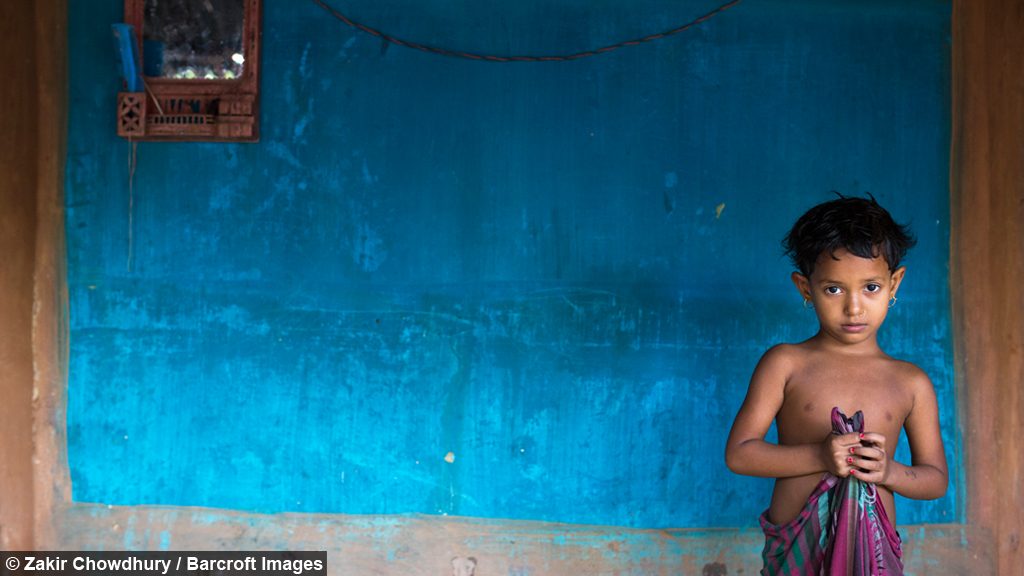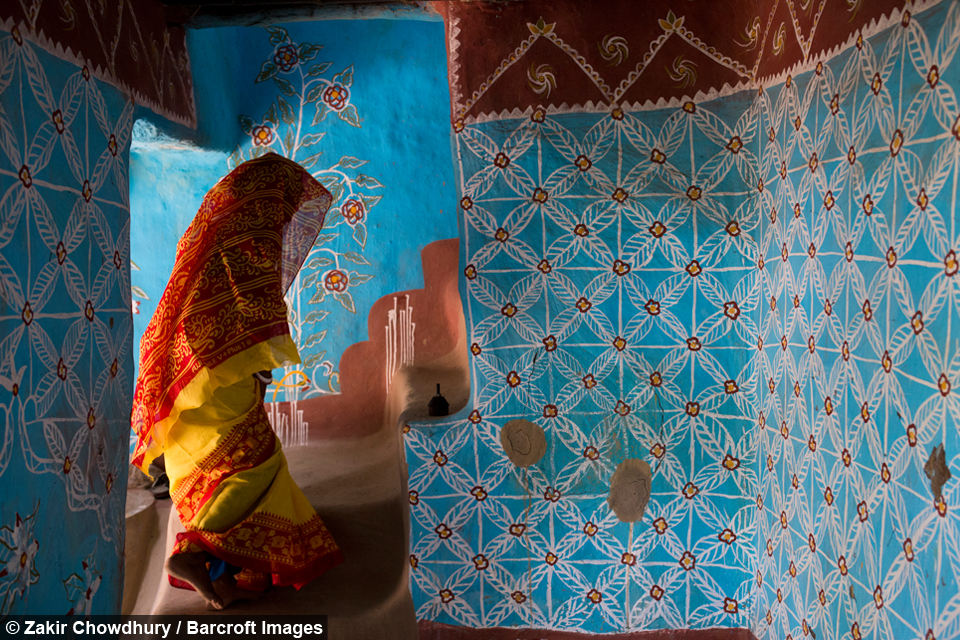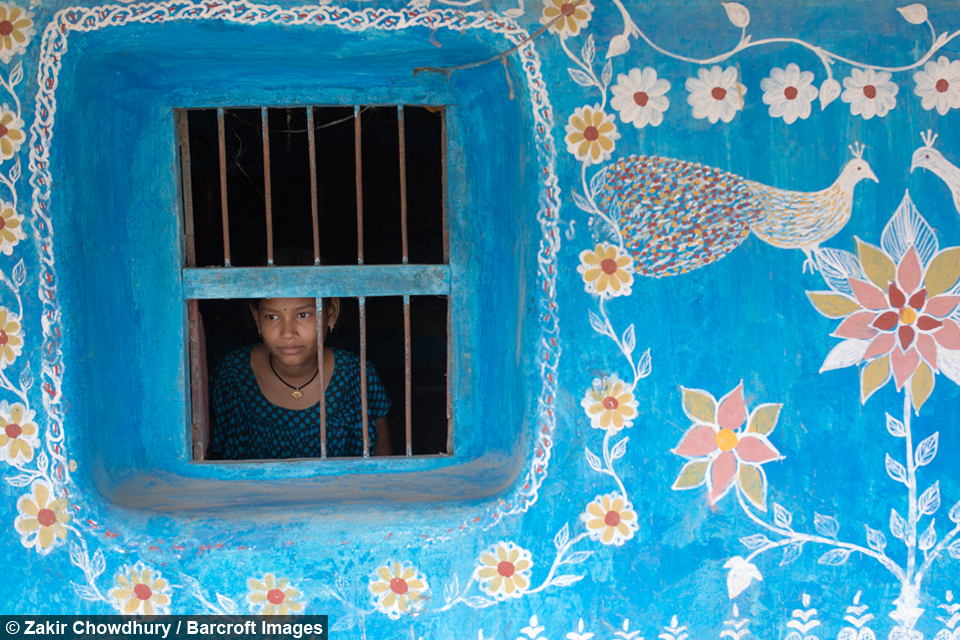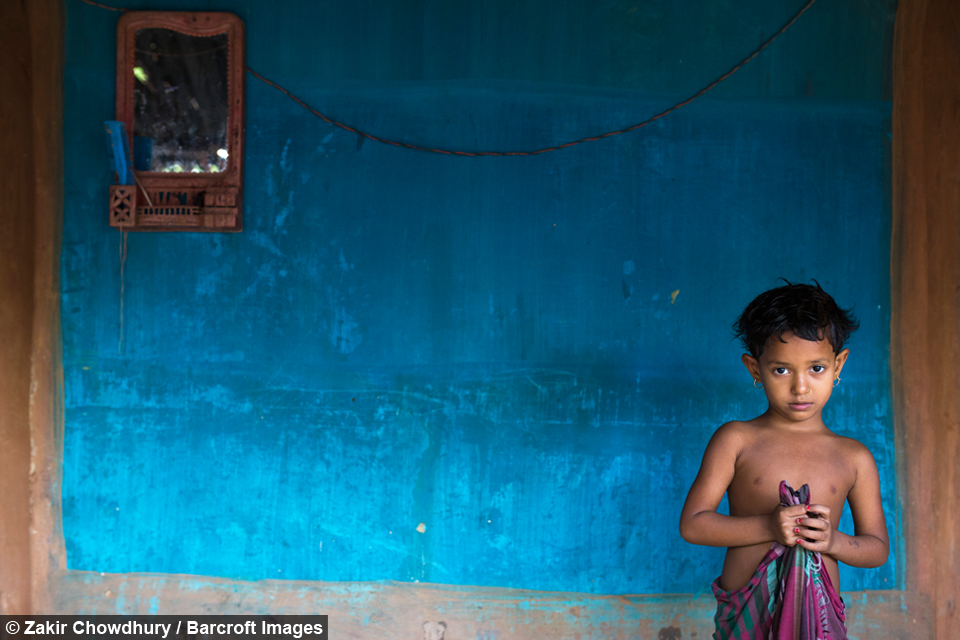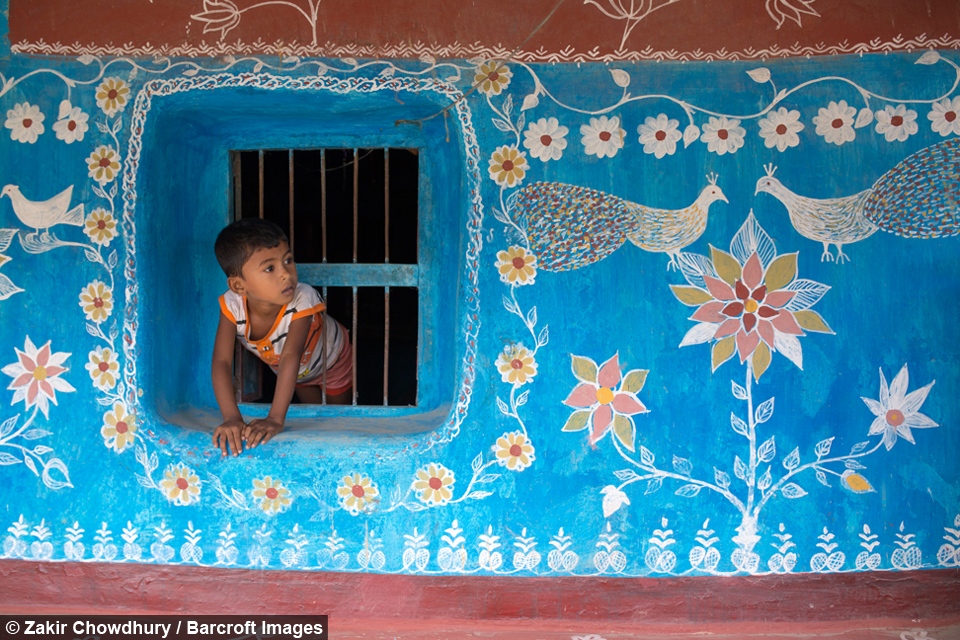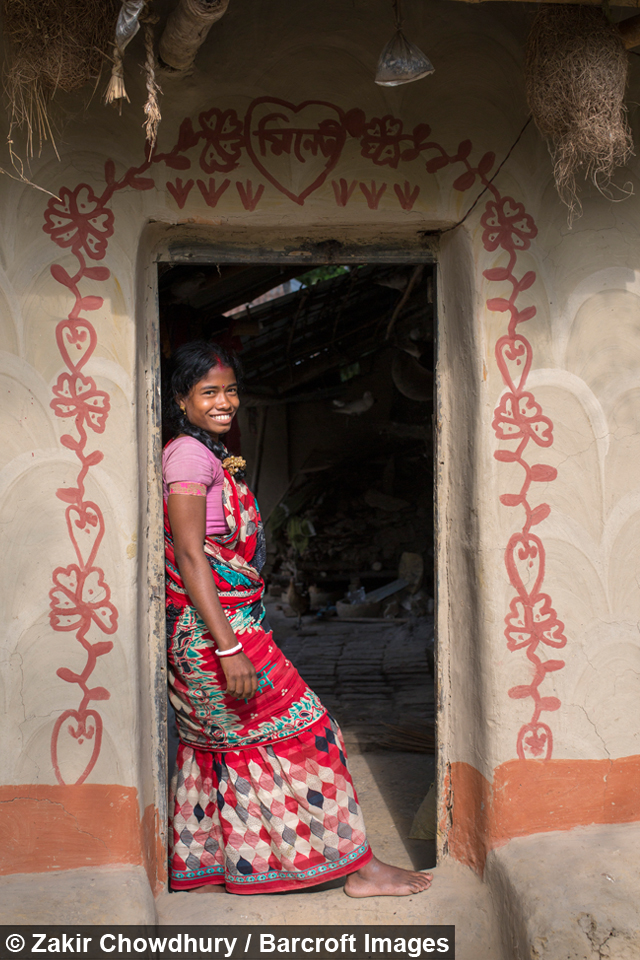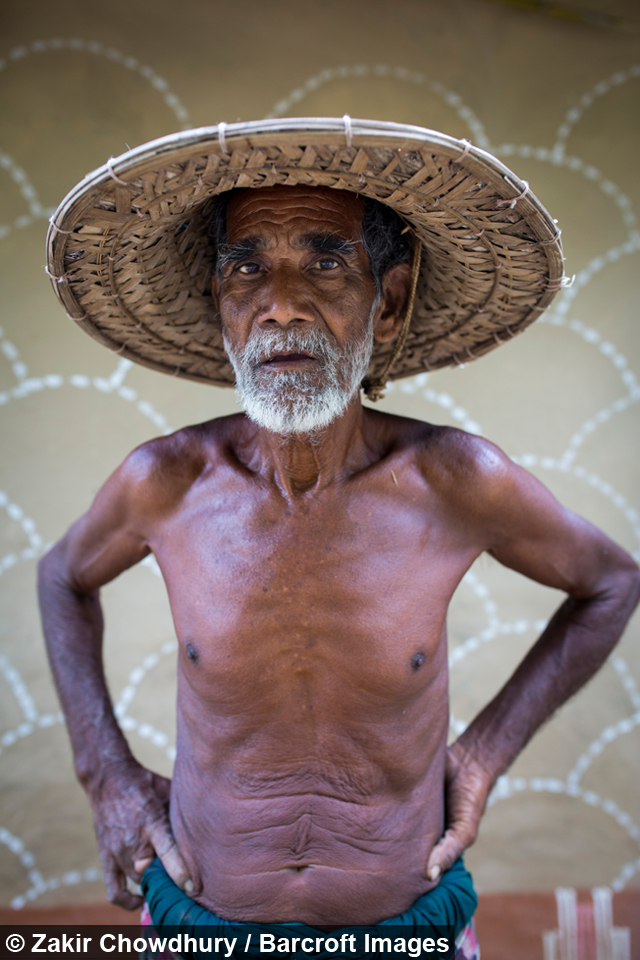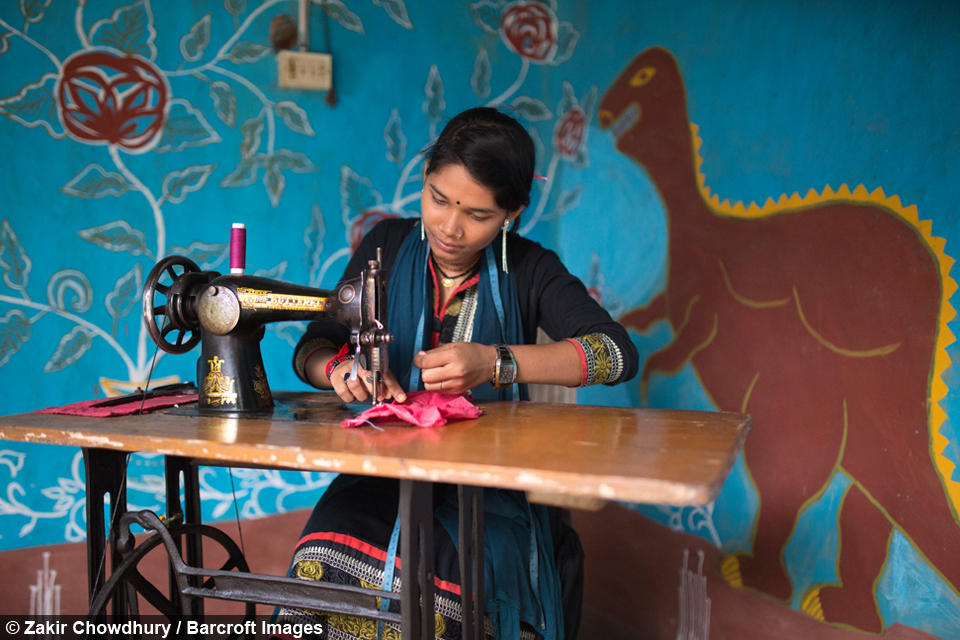Villagers transform simple mud houses with delicate paintings
By Hannah Stevens @Hannahshewans
Scroll down for the full story
This rural village in North Bengal, Bangladesh displays a cacophony of vibrant artwork and auspicious symbols.
Photographer Zakir Chowdhury visited the village to document the personalised houses.
Zakir said: “These houses are made by mud and the walls are beautifully painted using natural colours. Both people from the Santal tribe and Hindu people live in these houses.
“The village paintings are considered to be auspicious symbols related to fertility and fecundity.”
Santal people are classified as a scheduled tribe, which refers to groups who have been officially designated as historically disadvantaged people in India - during British rule of India they were simply known as Depressed Classes.
The indigenous group worship Marang buru, or Bonga, as the Supreme deity and pray to a court of spirits who represent different aspects of the world and ward off evil spirits.
Comparatively Hindu belief encompasses a variety of traditions, including looking to the inner divine Self - atman - or trusting in Gods like Shiva or Vishnu as the one true God.
Despite differing religions, the artful villagers have come together to transform their homes into mud masterpieces.
Some have elected for simplistic, but striking, white patterns to contrast the dark mud of the walls, while others have created colourful floral scenes complimented by hung portraits of religions idols or animals.
